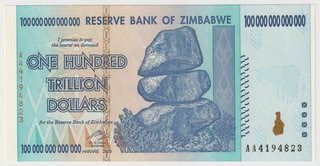?Over the long term, all of the fiat currencies of the world are involved in a competitive devaluation. The structural stresses in most of the western economies are such that centrals banks will attempt to continue to substitute liquidity for solvency.? said Rick Rule, chairman of Sprott US Holdings, a precious metals specialist.
Global Market Comments
February 22, 2013
Fiat Lux
Featured Trade:
(FOLLOW UP ON TESLA), (TSLA),
(DON?T MISS THIS REAL ESTATE BUBBLE),
(A VERY SHORT HISTORY OF HEDGE FUNDS),
(POPULATION BOMB ECHOES),
(POT), (MOS), (AGU), (RJA), (CORN), (WEAT), (SOYB)
Tesla Motors, Inc. (TSLA)
Potash Corp. of Saskatchewan, Inc. (POT)
The Mosaic Company (MOS)
Agrium Inc. (AGU)
ELEMENTS Rogers Intl Commodity Agri ETN (RJA)
Teucrium Corn (CORN)
Teucrium Wheat (WEAT)
Teucrium Soybean (SOYB)
Damn! I should have cut a commission deal with Tesla (TSLA) before I published my story on their amazing electric vehicle a few days ago (click here for ?My Take on the Tesla Tiff?). I have since received a dozen emails from readers telling me they have jumped on the waiting list with a $5,000 deposit, which I understand has been shortened to five months.
In the meantime, the company?s mercurial CEO, the South African programming genius, Elon Musk, has announced the firm?s Q4, 2012 earnings. The loss came in larger than expected at 65 cents a share, versus an expected 53 cents. But revenues jumped from a projected $298 million to $306 million. Musk is confident that Q1, 2013 will be profitable, as will the full 2013-year, and that a 25% profit margin will be realized.
Much of the loss was due to massive overtime wages for workers, with many clocking 70-hour weeks as they struggle to meet overwhelming demand. There are still 6,000 on the waiting list for the new Model S sedan. Musk says that the company is on target to manufacture 20,000 vehicles this year. Most of the orders have been for the high end, 85kWh, 300 mile range vehicle that starts at $72,400.
I have been deluged with questions from readers about the car?s performance. Here are the answers to a few:
The times to obtain a fully charged battery from flat that I have recorded from various power sources are:
45 minutes ? 440 volt public super charger
7 hours ? 220 volt, 40 amp plug in my garage
77 hours ? standard 110 volt home wall outlet
All public charges, from Whole Foods, public garages, and movie theaters, etc., are provided for free by a company called ChargePoint (click here for their website). There you can view their national network of 10,954 public charging stations. When I visit my home at Lake Tahoe, where overnight temperatures go well below zero, the company recommends that I keep the car plugged in overnight, just to keep it warm.
No, I am not indirectly running this car on high polluting coal. Notice that the lights in your home turn on in the middle of the night, even though no one usually wants power then. Utilities must generate massive amounts of power that gets wasted in order to maintain ?grid integrity?, a network that makes electricity available to us 24/7.
How much is wasted? Enough to run all 250 million cars in the US on electric power. This is why they give it away nearly for free if you charge between midnight and 7:00 AM (4.7 cents/kw versus 40 cents in my case). I am simply using power that has already been generated that otherwise would go unused.
Tesla advertises a maximum range of 265 miles, which is based on an EPA five cycle testing standard. But you can really get 300 miles with conservative driving, which is more than your bladder can stand. One 45-minute charge at Harris Ranch gets me from San Francisco to San Diego, some 500 miles. For longer trips I fly my own plane, go commercial, or drive my other car.
I?m sure more questions will come in, and I will answer them periodically. Or you can call Tesla directly at 877-798-3752.
As for the stock, I wouldn?t touch it here. It is far too expensive for me. These kinds of new technology stocks tend to maintain enormous premiums in the early days because of the cache and ?coolness? of their products. You saw the same thing with Apple (AAPL). I have no doubt that the company will be a huge success. But at $34 a share, it is far ahead of delivering actual financial results for investors.
There is a new real estate bubble forming in the US, but it is not inflating where you think. Apartment rents have been rapidly rising, and are about to go ballistic. In fact the appreciation has been so strong that the cost of ownership is now less than renting in many parts of the country, provided you can get one of those hard to get, ultra low interest rate bank loans.
By 2050 the population of California will soar from 38 million to 50 million, and that of the US from 300 million to 400 million, according to data released by the US Census Bureau and the CIA fact Book (check out the population pyramid below).
That means enormous demand for the low end of the housing market, apartments in multi-family dwellings. Many of our new citizens will be cash short immigrants from Asia and Latin America. They will be joined by generational demand for limited rental housing by 65 million Gen Xer's and 85 million Millennials enduring a lower standard of living than their parents and grandparents. These people aren't going to be living in cardboard boxes under freeway overpasses, and the new square footage created will be inadequate to meet demand, thanks to the recent six-year vacation for new construction.
The trend towards apartments also fits neatly with the downsizing needs of 80 million retiring Baby Boomers. As they age, boomers are moving from an average home size of 2,500 sq. ft. down to 1,000 sq. ft. condos and eventually 100 sq. ft. rooms in assisted living facilities. The cumulative shrinkage in demand for housing amounts to about 4 billion sq. ft. a year, the equivalent of a city the size of San Francisco.
In the aftermath of the economic collapse, rents are now rising and vacancy rates are shrinking. Fannie Mae and Freddie Mac financing is still abundantly available at the lowest interest rates on record. Institutions and high net worth individuals combing the landscape for high yield, low volatility cash flows and limited risk are pouring money in.
The Next Real Estate Bubble?
Legendary Fortune Magazine editor, Winslow Jones, created the first hedge fund out of a shabby office on Broadway in New York City in 1948, and generated monster returns over the next 20 years. He got the idea of a 20% performance bonus, now an industry standard, from ancient Phoenician sea captains who kept a fifth of the profits from successful voyages. Jones must have had an historical bent.
Then came the second generation titans, George Soros, Julian Robertson, and Michael Steinhardt, who made their debut in the sixties. I count myself among the third generation along with Paul Tudor Jones and Louis Bacon, who launched funds in the late eighties, when there were still fewer than 200 funds and $25 million was still considered a lot of money. The really big money showed up in the nineties when the pension funds found them.
After that, we suffered through the many ordeals that followed, including the collapse of Long Term Capital in 1995, the Amaranth blow up in natural gas in 2006, the Lehman Brothers bankruptcy in 2008, and John Paulson?s 50% draw down in 2011. Today there are over 8,000 hedge funds, thought to manage some $2.2 trillion which dominate all financial markets.
Hedge Funds Do Have Their Advantages
Pack your portfolios with agricultural plays like Potash (POT), Mosaic (MOS), and Agrium (AGU) if Dr. Paul Ehrlich is just partially right about the impending collapse of the world's food supply. You might even throw in long positions in wheat (WEAT), corn (CORN), soybeans (SOYB), and rice.
The never dull, and often controversial Stanford biology professor told me he expects that global warming is leading to significant changes in world weather patterns that will cause droughts in some of the largest food producing areas, causing massive famines. Food prices will skyrocket, and billions could die.
At greatest risk are the big rice producing areas in South Asia, which depend on glacial run off from the Himalayas. If the glaciers melt, this crucial supply of fresh water will disappear. California faces a similar problem if the Sierra snowpack fails to show up in sufficient quantities, as it did last year.
Rising sea levels displacing 500 million people in low-lying coastal areas is another big problem. One of the 80-year-old professor's early books The Population Bomb was required reading for me in college in the 1960?s, and I used to drive up from Los Angeles to Palo Alto just to hear his lectures (followed by the obligatory side trip to the Haight-Ashbury).
Other big risks to the economy are the threat of a third world nuclear war caused by population pressures, and global insect plagues facilitated by a widespread growth of intercontinental transportation and globalization. And I won't get into the threat of a giant solar flare frying our electrical grid.
?Super consumption? in the US needs to be reined in where the population is growing the fastest. If the world adopts an American standard of living, we need four more Earths to supply the needed natural resources. We must raise the price of all forms of carbon, preferably through taxes, but cap and trade will work too. Population control is the answer to all of these problems, which is best achieved by giving women educations, jobs, and rights, and has already worked well in Europe and Japan.
All sobering food for thought. I think I?ll skip that Big Mac for lunch.
?Changes in consumption stemming from per capita income rises from $1,000 a year to $5,000, as you are seeing in India, or $5,000 to $10,000, as you are seeing in China, is a very different kind of consumption. It is much more commodities heavy, it is food heavy, it draws a lot more on water supplies,? said Ian Bremmer, president of the Eurasia Group, an New York Based think tank.
Global Market Comments
February 21, 2013
Fiat Lux
Featured Trade:
(IS THE PARTY OVER?),
(SPY), (INDU), (IWM), (FXY), (YCS), (TLT), (GLD), (SLV), (FXE),
(RUMBLINGS IN TOKYO), (FXY), (YCS),
(TESTIMONIAL)
SPDR S&P 500 (SPY)
Dow Jones Industrial Average (INDU)
iShares Russell 2000 Index (IWM)
CurrencyShares Japanese Yen Trust (FXY)
ProShares UltraShort Yen (YCS)
iShares Barclays 20+ Year Treas Bond (TLT)
SPDR Gold Shares (GLD)
iShares Silver Trust (SLV)
CurrencyShares Euro Trust (FXE)
CurrencyShares Japanese Yen Trust (FXY)
ProShares UltraShort Yen (YCS)
The simple answer is no, not yet. But the neighbors have complained about the noise and called the cops. Today?s 108-point drop in the Dow, and 19-point decline in the S&P 500 does mean that the straight line, parabolic phase of the bull market is over.
One of the most overbought markets in history is finally taking a pause. We traders are now going to have to work a little harder to earn our crust of bread.
Of course, I saw this one coming a mile off. I was expecting some short of dump as the March sequestration recklessly approached. That?s why I have been running hefty 50% in short positions against even beefier longs.
It is also why there has been a recent dearth of Trade Alerts, only two in the last two weeks, the least since last July. Rather than add to longs up here in the stratosphere, I instead let my existing call spreads rapidly recede in my rear view mirror.
We saw the selloff spread across all asset classes, like the waves propagated by an empty champagne bottle tossed into a swimming pool. The Euro (FXE) took a big hit against the dollar, plunging more than a cent. Gold (GLD) absolutely took it on the kisser, cratering $42, followed by silver (SLV), down $1. Crude gave back $2.50. Thankfully, the Japanese yen (FXY), (YCS) only churned. Strangely, Treasury bonds (TLT) barely moved when they should have been up at least two points, continuing their recent stagnation near one year lows.
This was the correction that was begging to happen. You saw it in the Volatility Index (VIX) that was probing new five year lows. You almost needed a microscope to detect the recent daily trading ranges.
All it took was some out of date Fed notes to light the match. Suddenly, there are more members opposed to infinite and unending quantitative easing than previously understood. Perhaps it could end sooner than later? So that was a surprise? Hey, you live by the Fed, you die by the Fed.
So how much pain do we have to suffer before our assault on 1,600 resumes? The no brainer retracement level from here is the 50-day moving average across all the indexes. That works out to 1,471 for the (SPX), (-2.6%), 13,569 for the Dow (-2.6%) and 87.23 for the Russell 2000 ETF (IWM), (-4.0%).
As for the positions in our model-trading portfolio, we are in pretty good shape. Our short positions in the (SPY) are now clearly toast and should expire at zero on March 15, only 17 trading days from here. We may take some heat on our equity longs. But for us to really lose money on them, the markets would have to give up almost all of their 2013 gains. I don?t see that happening. If I am right, the year to date performance should grind up to an eye-popping 32% in three weeks.
We have a shot at a dream scenario here. Let the market fall, but not enough to touch our call spreads. Everything expires at their maximum point of profitability in mid March. Then we will have a 100% cash position right at the bottom of a correction.
Next, we replay the whole strategy one more time to make another 30%. We?ll do that by piling into call spreads for the indexes again, as well as single stock spreads for cyclicals, like industrials and consumer discretionaries, and health care. One can only hope.
As one often hears when traveling around Asia, the Chinese character for crisis is also the one for opportunity. Looks like more are just setting up just over the horizon.
Is the Party Over?
I spent ten years of my life tramping in and out of Japan?s Ministry of Finance headquarters in Tokyo?s Kasumigaseki district. It was a dreadful reinforced steel and concrete affair with a dull grey tile siding that was so solidly built that it was one of the few structures in the city to survive WWII. But the building offered spacious prewar dimensions, with lovely high ceilings, and I never tired of walking its worn hardwood floors. I was there so often that some government officials thought I worked there, and they did eventually give me an office, the first ever granted to a foreign correspondent.
So to get an update on the Land of the Rising Sun I called a senior official whose father I knew well as a Deputy Minister of Finance for International Affairs during the 1970?s. I was a regular at his apartment in Shinjuku on Saturday nights, where we spent endless hours alternately playing chess and Scrabble over a bottle of Johnny Walker Red and smoking acrid Mild Sevens. We did everything we could to expand each other?s? Japanese and English vocabularies with the words not found in dictionaries. When the bottle was almost finished and his face was beet red, the Elvis impersonations would start.
My friend told me that the ongoing strength of the yen is rapidly becoming a major political issue in Japan. The spot market is threatened an all-time high only three months ago, and on a trade-weighted basis it was already at a new peak. Exporters were getting destroyed by the strong yen, which was making their goods increasingly expensive in a cost cutting competitive world.
This was forcing them to accelerate a 20-year effort by corporations to offshore production to China, which was ?hollowing out? Japan, and causing economic growth to bleed away, and unemployment to rocket. The situation was getting so bad that American companies that offshored jobs to Japan years ago, like Caterpillar (CAT), were taking them back home because labor costs are so high. His fears were confirmed by a Japanese GDP that shrank in Q4, 2012.
His masters have made repeated comments in the Diet, the Japanese Parliament, made comments in the Diet this week about his concern over yen strength. More specifically, the road is now clear is seeking approval for a much more aggressive stance to pursue Bernanke style quantitative easing to knock the stuffing out of the yen and stimulate the economy.
This time, the ministry has much more ammunition to work with. Japan has been running its first trade deficit in 30 years. This may not be an anomaly. In response to the tsunami induced melt down at the Fukushima plant, Japan is permanently shutting down a large part of its nuclear power generating capacity. At its peak, nuclear accounted for 25% of the country?s electric power supply. That is forcing a huge surge in oil imports from the Middle East that has greatly tipped Japan?s balance of trade against it. Crude?s recent surge from $84/barrel to as high as $98 has only made matters worse.
He then told me that, he too, was now learning to play Scrabble and asked me for my list of words where the letter ?Q? is not followed by a ?U?. I said that I was not inclined to disclose America?s most valuable trade secrets to a foreign competitor. However, in deference to his late father, he couldn?t go wrong starting with ?Qi?, ?Qabala?, ?Qadi?, ?Qaid?, ?Qat? and ?Qanat?. I hung up the phone and immediately sold more yen against the dollar.
Legal Disclaimer
There is a very high degree of risk involved in trading. Past results are not indicative of future returns. MadHedgeFundTrader.com and all individuals affiliated with this site assume no responsibilities for your trading and investment results. The indicators, strategies, columns, articles and all other features are for educational purposes only and should not be construed as investment advice. Information for futures trading observations are obtained from sources believed to be reliable, but we do not warrant its completeness or accuracy, or warrant any results from the use of the information. Your use of the trading observations is entirely at your own risk and it is your sole responsibility to evaluate the accuracy, completeness and usefulness of the information. You must assess the risk of any trade with your broker and make your own independent decisions regarding any securities mentioned herein. Affiliates of MadHedgeFundTrader.com may have a position or effect transactions in the securities described herein (or options thereon) and/or otherwise employ trading strategies that may be consistent or inconsistent with the provided strategies.



























